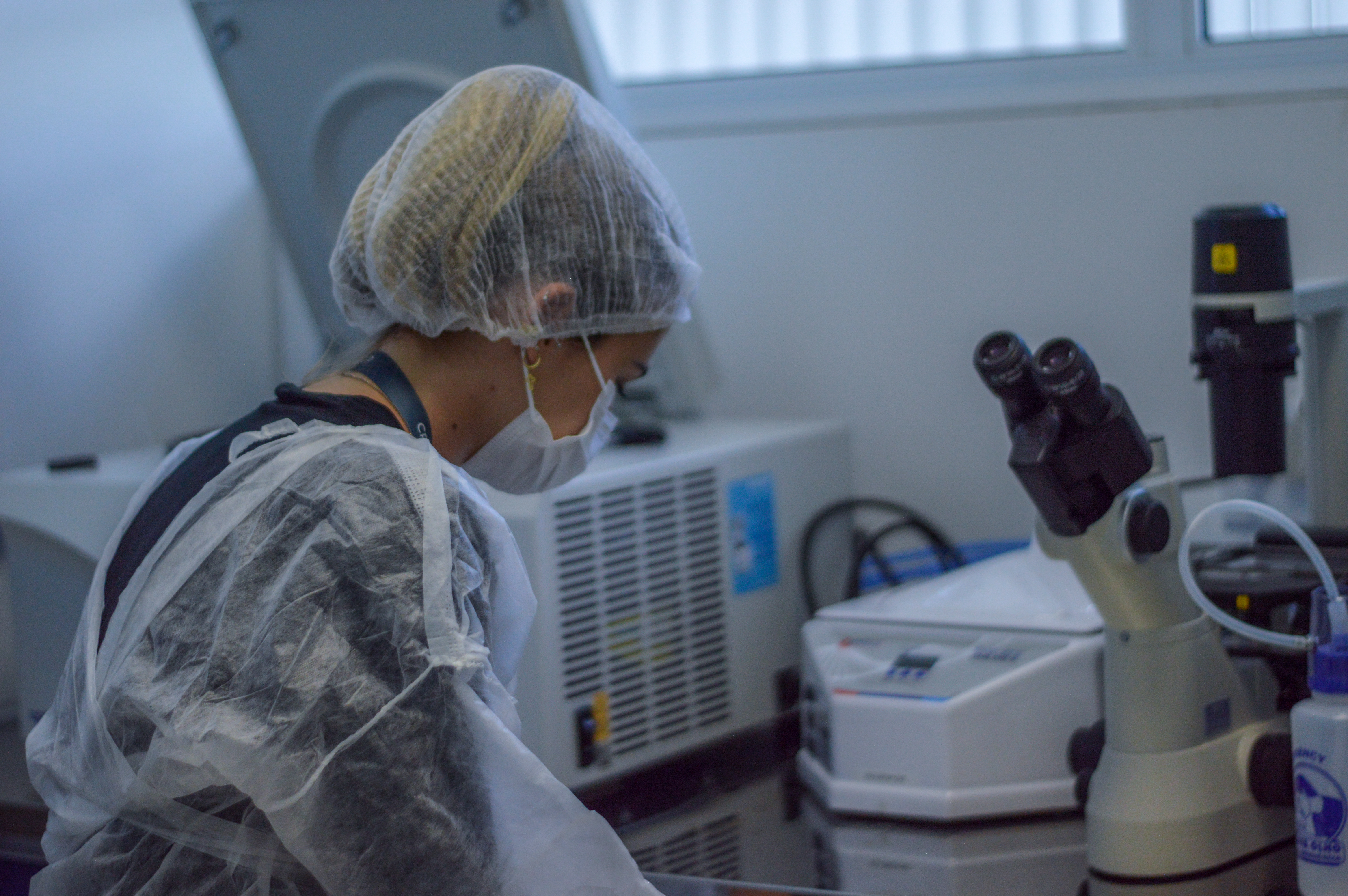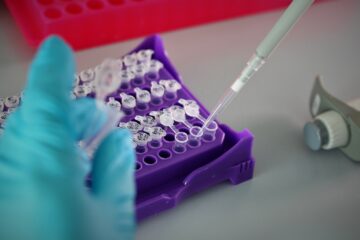Acne is a very common skin condition that affects millions of people around the world. It occurs when the hair follicles become clogged with sebum and dead skin cells, causing inflammation and the formation of pimples and blackheads. Although acne is most common during the teenage years, it can affect people of all ages.

There are many acne treatments available, including prescription drugs, over-the-counter products, and cosmetics. Due to their greater accessibility, anti-acne cosmetic products are highly sought after by consumers, who are increasingly attentive and careful in choosing products, considering their efficacy and safety for the skin.
Thus, it is of great importance to validate the anti-acne efficacy of cosmetic ingredients, we will discuss the most used ingredients and efficacy validation methodologies later in this article. Before that, let’s understand the physiological mechanisms behind acne.
Physiological mechanisms
The physiological mechanisms of acne involve several biological processes that occur in the skin, including:
Sebum hypersecretion:
The sebaceous gland is responsible for producing sebum, which is a natural oil that helps keep the skin hydrated and protected. In acne, the sebaceous gland produces excess sebum, which can clog hair follicles.
Follicular hyperkeratinization:
Skin cells normally shed and are replaced by new cells in a process called cell turnover. In acne, skin cells lining the hair follicle build up and mix with sebum, clogging the follicle.
Bacterial proliferation:
The bacteria Propionibacterium acnes (P. acnes) is a bacteria commonly found on the skin and feeds on sebum. In acne, the P. acnes bacteria overgrows inside clogged hair follicles, causing inflammation and infection.

DOI: http://dx.doi.org/10.2174/1389200216666150812124801
Inflammatory immune response:
When P. acnes bacteria infect clogged hair follicles, the immune system responds by sending out white blood cells to fight the infection. This causes inflammation and redness in the skin, as well as leading to the formation of pimples, pustules, and cysts.
Hormonal activity:
Androgen hormones, such as testosterone, stimulate sebum production by the sebaceous glands. For this reason, acne is common during puberty when androgen hormone levels increase. However, other factors such as stress and the use of certain medications can also affect hormone levels and contribute to the development of acne.
Effectiveness of anti-acne ingredients
There are several active ingredients commonly used in anti-acne cosmetic products, each with varying degrees of effectiveness and safety. Below are some of the most commonly used ingredients and their respective effectiveness:
Salicylic acid:
This ingredient is known for exfoliating the skin and unclogging pores. It also has anti-inflammatory properties and can help reduce the redness and swelling associated with acne. Salicylic acid is safe for most people, but it can cause dry, flaky skin in some cases.
Benzoyl peroxide:
Characterized by its antibacterial properties, Benzoyl Peroxide helps to eliminate acne-causing bacteria. It also helps to reduce inflammation and redness of the skin area. Benzoyl peroxide can be very effective, but in some cases, it can cause skin irritation, flaking, and dryness.
Glycolic acid:
Glycolic Acid helps to reduce dark spots and acne scars and also contributes to skin exfoliation and unclogging pores. Glycolic acid is an alpha hydroxy acid (AHA), which is safe for most people but can cause sensitivity to sunlight in some cases.
Azelaic acid:
Characterized for its antibacterial and anti-inflammatory properties, azelaic acid also aids in reducing dark spots and acne scars. Azelaic acid is safe for most people, but it can cause skin irritation and peeling in some cases.
In addition to these ingredients, several others can also be effective for treating acne, such as retinoic acid, green tea extract, and zinc.
Effective anti-acne formulations
The effectiveness of anti-acne products directly depends on their formulation. Anti-acne products should be mild, non-comedogenic, and non-irritating to the skin. They must be formulated to gently cleanse the skin without stripping it of its natural oils and moisture.
Effective anti-acne formulations must contain active ingredients that help prevent and treat acne, as well as ingredients that contribute to maintaining the health and balance of the skin. Additionally, these products must be formulated to prevent pore clogging and not irritate the skin.
Below are some important guidelines for effective anti-acne formulations:
- Proven effective active ingredients:
The choice of ingredients that will be part of the formulation of cosmetic products is essential; all must have their effectiveness proven. There are several methodologies for evaluating and validating the anti-acne efficacy of cosmetic ingredients, which will be explored later in this article.
- Use moisturizing and emollient ingredients:
Acne can dry out the skin, so it’s important to include effective moisturizing and emollient ingredients that help keep your skin hydrated without clogging your pores. Some common moisturizing ingredients include glycerin, hyaluronic acid, and urea. Emollient ingredients include natural oils such as jojoba oil and grapeseed oil.
- Avoid comedogenic ingredients:
Some ingredients can clog pores and aggravate acne. It is important to avoid comedogenic ingredients such as lanolin, mineral oil, and petrolatum.
- Use a non-comedogenic base:
The base of an anti-acne formulation should be non-comedogenic and non-irritating to the skin. Some common non-comedogenic foundations include gel, lotion, and foam.
- Include soothing ingredients:
Acne can be inflammatory and irritating to the skin. It is important to include calming ingredients such as aloe vera, chamomile, and green tea, which help soothe the skin and reduce redness.
- Keep the formulation simple:
Anti-acne formulations should be simple and not contain too many ingredients. The more ingredients, the greater the likelihood of skin irritation. In addition, simple formulations and multifunctional ingredients have represented an important market trend in the cosmetics segment, being prioritized by consumers. With molecular screening techniques, it is possible to validate several efficacy claims in a single cosmetic ingredient, optimizing its validation, exploring the full potential of the ingredient’s efficacy, and avoiding the addition of unnecessary ingredients to the formulation. This molecular screening technique will also be discussed later in this article.
- Test formulation safety:
Before launching an anti-acne product, it is important to test it to ensure that it is safe and effective. In addition to clinical tests, in vitro preclinical trials are essential for validating safety against skin irritation and corrosion.
In summary, an effective anti-acne formulation should include proven active ingredients, moisturizing and emollient ingredients, avoid comedogenic and irritating ingredients, include soothing ingredients, keep the formulation simple, and test for efficacy and safety before product release.
Methodologies for validation of anti-acne efficacy
There are several in vitro techniques for preclinical evaluation of the anti-acne efficacy of cosmetic ingredients. In this article, we will discuss more details about gene expression techniques, screening of molecular bioactivity, and evaluation of the enzymatic and bacterial activity.
Gene expression
Validation of anti-acne efficacy by gene expression is an advanced technique for evaluating skin care products. This technique allows evaluating of the action of active ingredients at the molecular level, analyzing how they affect the expression of genes related to acne.
Acne is a complex skin condition that involves an interaction between hormones, inflammation, and bacteria. Several genes are involved in the pathogenesis of acne, including those related to sebum production, inflammation, and cell proliferation. The expression of these genes can be evaluated using the technique of quantitative real-time PCR (RT-qPCR), which allows the quantitative analysis of the expression of specific genes, being commonly used to evaluate lipogenesis mRNA gene expression (ATGL, HSL, PRDM ).
By evaluating the anti-acne efficacy of cosmetic ingredients by gene expression, one can assess how these ingredients affect the expression of acne-related genes. The studies can be carried out in sebaceous epithelial cells, responsible for the production of sebum in the skin. These studies, therefore, can assess how active ingredients affect sebum production, inflammation, and cell proliferation.
In addition, the presence of inflammation and skin lesions caused by acne can also be detected by analyzing the gene expression of pro-inflammatory cytokines such as tumor necrosis factor-alpha (TNF-α) and interleukin-1 beta (IL-1β ). The gene expression of these markers can be evaluated in skin samples treated with cosmetic ingredients and compared with untreated control samples.
Evaluation of anti-acne efficacy by gene expression allows manufacturers of cosmetic ingredients and products to identify active ingredients that positively affect the expression of acne-related genes. This could lead to the development of more effective and personalized skin care products that specifically target genes involved in the pathogenesis of acne.
Enzymatic activity
The evaluation of enzymatic activity is another technique widely used in the validation of anti-acne efficacy, mainly evaluating the enzyme 5-alpha Reductase (SRD5A1-3), responsible for converting testosterone into dihydrotestosterone (DHT), which is a hormone androgenic stimulating the production of sebum by the sebaceous glands.
Assessment of 5-alpha Reductase (SRD5A1-3) activity and testosterone metabolism allows for assessing how active ingredients affect sebum production and acne prevention. This technique involves incubating the sebaceous cells in the presence of the active ingredients and then quantifying the levels of DHT and sebum produced by the cells.
Decreased 5-alpha Reductase (SRD5A1-3) activity and decreased testosterone metabolism are indicative of a decrease in sebum production, which may help prevent acne.
Bacterial activity
Evaluation of the anti-acne efficacy of cosmetic ingredients can also be performed by evaluating the activity of Propionibacterium acnes, a bacteria commonly associated with acne.
Propionibacterium acnes is a gram-positive anaerobic bacteria that is normally found on the skin, but which can also contribute to the inflammation associated with acne. This bacteria produces free fatty acids which, when present in excess, can cause inflammation and damage to the skin.
To evaluate the anti-acne efficacy of cosmetic ingredients through the evaluation of Propionibacterium acnes, bacterial susceptibility tests are performed. Ingredients are tested at different concentrations against a reference strain of Propionibacterium acnes. The minimum inhibitory concentration (MIC) is the lowest concentration of the ingredient that inhibits the growth of the bacteria.
Molecular bioactivity screening
Molecular bioactivity screening is a technique that allows validating multiple efficacy claims in a single ingredient, through a single test, bringing agility to the efficacy evaluation process and contributing to simple formulations, avoiding the addition of unnecessary ingredients to the formulation, and exploring the potential of multifunctional ingredients.
The efficacy screening methodology consists of an integrated approach to gene expression evaluation and proteomics profile characterization. Data are interconnected through a bioinformatics tool that compiles differentially expressed genes and proteins with different relative concentrations into efficacy claim indicators. For example, after exposing the test compound to the respective cell cultures, the tool identifies that the AQP1 and AQP2 genes are expressed with greater intensity when compared to the control. There is correspondence between this expression and the relative concentration of the proteins, it will deliver an indication that the efficacy claim of a moisturizing effect can be further investigated. You can find more information about molecular bioactivity screening in the article “A new biomolecular screening for efficacy claims” on our website.
Crop Biolabs approach
Crop Biolabs is an integrated external R&D facility, specialized in a variety of preclinical and analytical services, external quality assessment, phenotypic and molecular assays for advanced therapeutics, pharmaceuticals, cosmetic ingredients, and sanitizing companies, in addition to providing claim substantiation and safety evaluations from discovery to regulation for new solutions and bespoke products.
We developed the validation of anti-acne efficacy through molecular bioactivity screening, evaluation of RT-qPCR for lipogenesis mRNA gene expression (ATGL, HSL, PRDM), 5-alpha Reductase (SRD5A1-3) activity and testosterone metabolism and activity of Propionibacterium acnes.
Our mission is to collaborate with the technological maturation of products and developments in life sciences, either with a punctual service or with a complete R&D solution: from idea to impact.
Learn more about Crop Biolabs: https://cropbiolabs.com.br/
Author: Carolina Barizan, Biomedical Scientist – Marketing Analyst, Crop Biolabs




